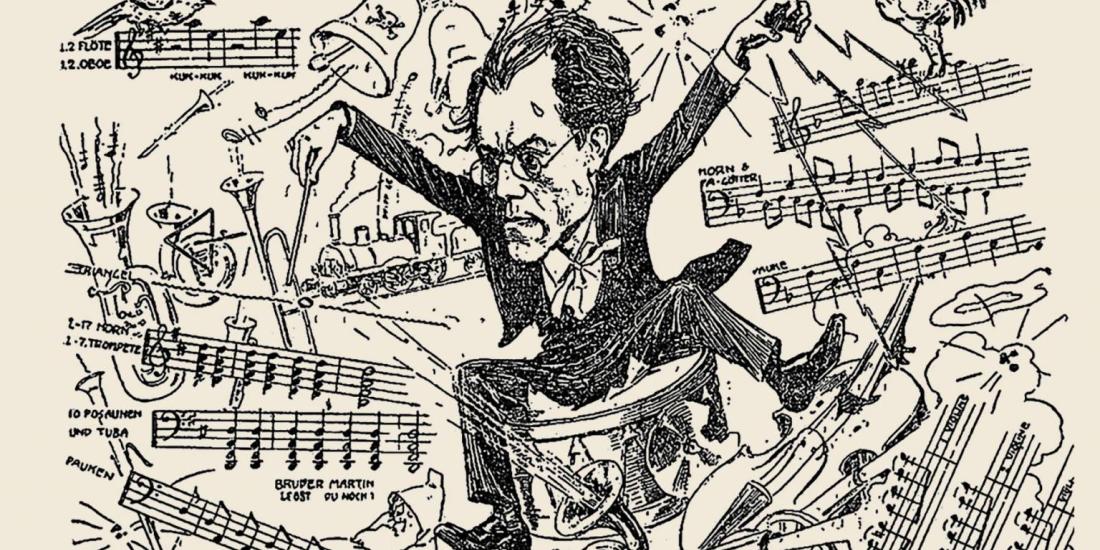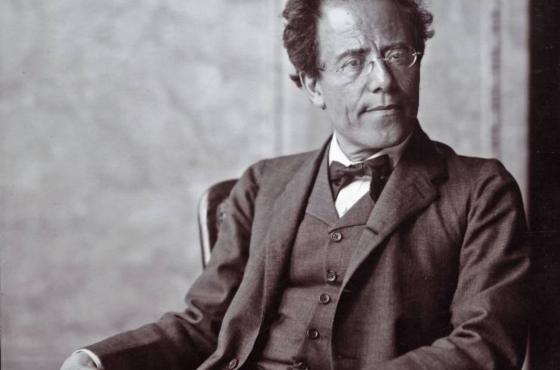In addition to strings, the instrumentation for Mozart’s Piano Concerto No. 23 consists only of one flute, two clarinets, two bassoons and two horns. In Mahler’s case, it is significantly larger. Every group of woodwinds in Mahler’s Symphony No. 6 comprises at least five instruments, including instruments like piccolo, cor anglais and contrabassoon. Then there is also a sizeable string section, twenty brass instruments, harps and a celesta. Mahler even states that the latter two should ideally be in duplicate. Finally, the percussion section comprises not only kettle drums and a series of standard percussion instruments, but also the cowbells and the infamous hammer required by Mahler.
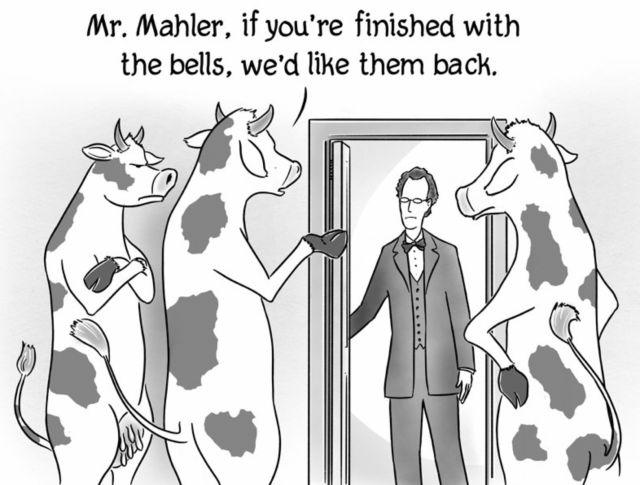
Traditional form and polyphonic character
For this large instrumentation, Mahler wrote an extensive symphony that is among his most traditional in terms of form. After all, the symphony comprises the usual four movements: an opening Allegro followed by a slow Andante moderato and a Scherzo, and ultimately the Finale. The order of the two middle movements is open for discussion: the first edition states Scherzo-Andante, but Mahler conducted Andante-Scherzo. In the final movement, the dull blow of an enormous hammer is sounded twice. Originally the hammer was to be struck five times, but Mahler soon reduced this to three and later two. This symphony is often referred to as ‘the Tragic’ and, according to Alma Mahler, Gustav’s spouse, the hammer blows are the blows of fate.
But why did Mahler need such a large orchestra? The American twentieth-century composer Aaron Copland wrote that Mahler was ahead of his time in two aspects: firstly because of the pronounced polyphonic character of his musical textures and secondly because of his original instrumentation. In fact, the two aspects are closely interwoven. In the case of Mahler, the instrumentation drives the polyphony, just as much as the polyphony influences the instrumentation. Inspired by Bach, Mahler follows the old polyphonic tradition but then on a grand scale for a romantic orchestra. By making his orchestra so large, Mahler gives himself room to distribute musical lines and motifs across various instruments or combinations of instruments. This ensures an incredible diversity of orchestral sounds and makes the overall listening experience more transparent (although a critic wrote of Symphony No. 6, following its premiere, that the work consists of “brass, brass and nothing but brass”). Instruments that are not often used to play melodic material are also allocated melodies by Mahler. For example, the bass tuba has a solo shortly after the start of the finale.
Beethoven reorchestrated
According to Mahler, the large Wagnerian symphony orchestra was needed to represent a growing number of colours of the musical rainbow. Mahler described his vision of music history in one of his letters. He posited that the history of music was a progression: prior to Beethoven there was, in essence, primitive chamber music that portrayed simple emotions. Beethoven heralded a new era that focused on the transitions and conflicts between different emotions. This required a broader tonal palette and therefore a larger orchestra, as well as more specific notation. If you read his scores, you can see that Mahler attempted to express his wishes with almost surgical precision by using all manner of detailed annotations.
This perspective on the history of music led Mahler to write arrangements of works by other composers too. For example, he created new orchestrations of all the symphonies of Beethoven and Schumann. After all, Mahler was convinced that a larger orchestra was a means of revealing previously concealed layers of the music. It is true that, in Beethoven’s day, brass instruments did not possess the same abilities as in Mahler’s era. This is why Mahler rewrote their parts in certain sections. However, he did not limit himself to such technical interventions. In his reworking of Beethoven’s Ninth Symphony, for example, Mahler frees the bassoons from their bass function. Instead they are given a more melodic function in various passages. This preference for musical liner rather than harmonic detail is also a significant aspect in Mahler’s own compositions.
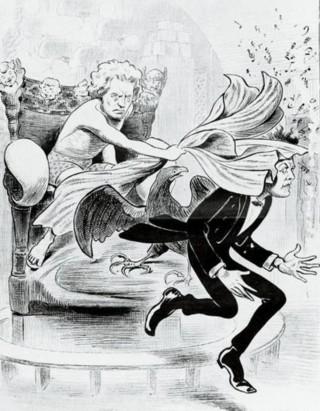
A cult of ugliness?
Contemporary audiences are familiar with the orchestral sound of Mahler, but to listeners around the turn of the century his orchestration methods were highly innovative. A critic referred to this new orchestral sound as “a cult of ugliness”. Mahler’s sound idiom was so different that his music was not always warmly received. However, as Mahler worked in such a considered and delicate way with instrumentation, he influenced how composers who came after him treated the orchestra. For example, he can be considered a forerunner of the ‘Klangfarbenmelodie’ that we encounter in the music of Schönberg, among others.
Mahler was also one of the first composers to work with dynamic instructions in a very conscious and precise manner. If the entire orchestra starts to play forte at the same moment during a loud passage, the stronger instruments will overpower those which are naturally quieter. For this reason, Mahler is meticulous in determining the appropriate dynamic for each instrument. He also plays around with this in order to influence the timbre. For example, in the first movement of the symphony, just before the wind chorale, there are two long chords played by the oboes together with the trumpets. The trumpets play softer while the oboes become louder. The effect of this is the transformation of the overall sound from a brass to a woodwind sound.
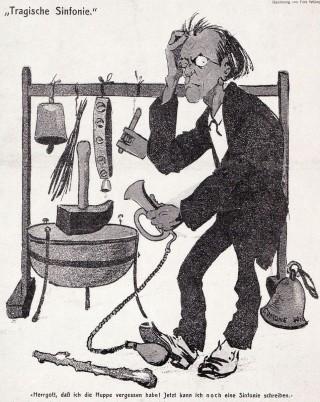
The look inward
In his Symphony No. 6, Mahler does not let us explore this rich sound world at our own pace. The music turns from the soothing, velvet sound of strings and horns in the Andante moderato to the blaring, resounding brass sound of the Finale because Mahler wishes to express certain ideas. In many of his other works he uses text to point the listener in a certain direction regarding the musical content, but in the case of this symphony we only have to music to go on. Mahler did not even acknowledge the ‘Tragic’ epithet and wrote that “my Sixth will elicit riddles that can only be solved by a generation that has absorbed and digested my first five symphonies.” Despite its size, this symphony is essentially a work that is focused on – Mahler’s own? – inner experience and dark reflections. This is partly due to the fact that the melodic material is rarely very memorable, and the symphony is more inward-looking than some of Mahler’s other symphonies, which are almost cosmic in scope. Instead, the ingenious structure and instrumentation are all the more compelling and draw the listener into the music. Following this musical path is what makes a live performance of Mahler’s music so exciting and electrifying.
Before devoting himself to music, Pieter Bogaert studied physics at Cambridge and Oxford. Today, he performs as a solo pianist as well as a chamber musician and Lied accompanist. He is also increasingly active as a writer on a wide range of musical topics.
